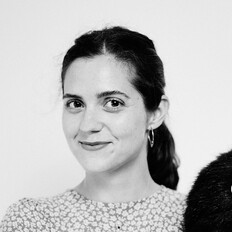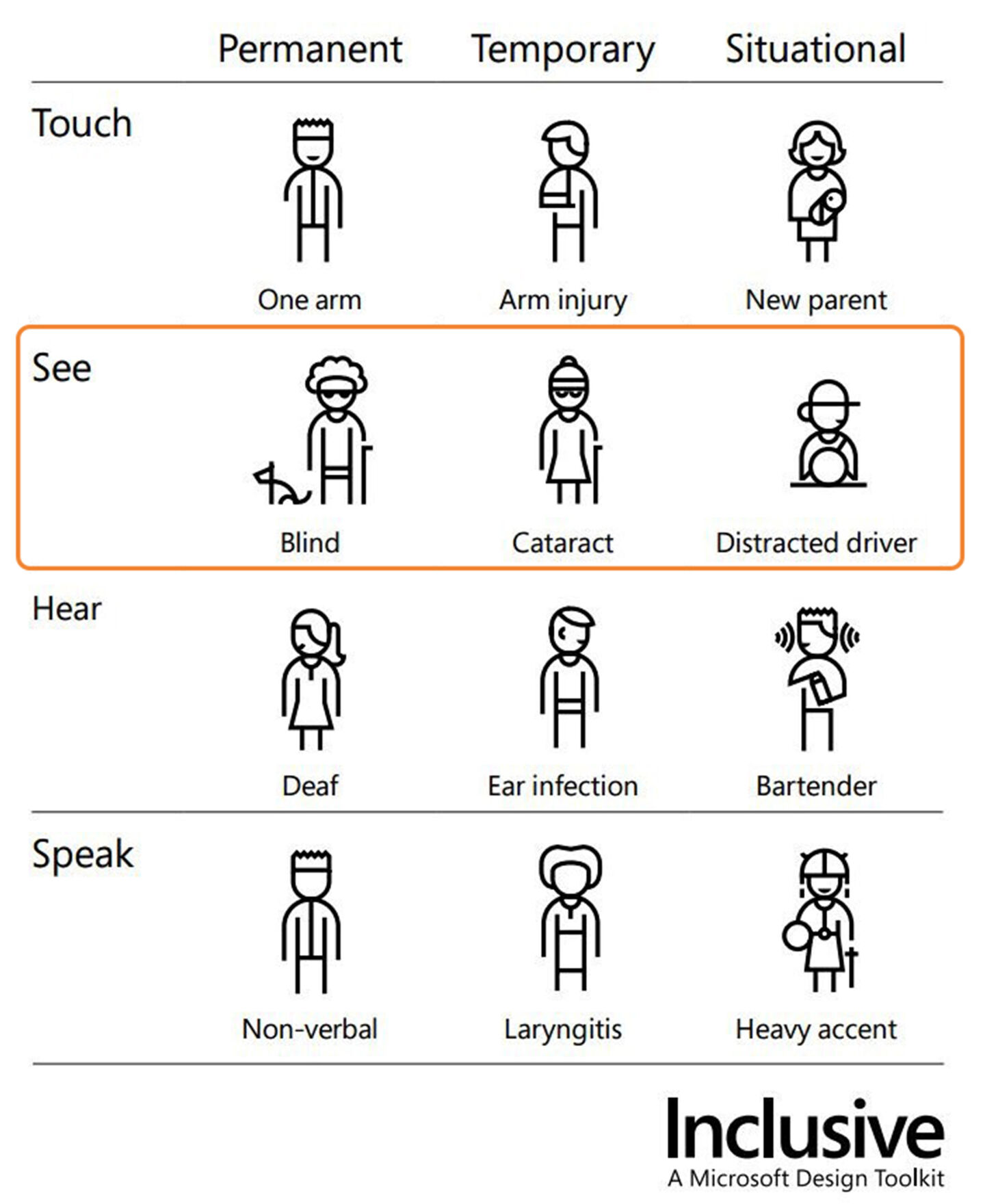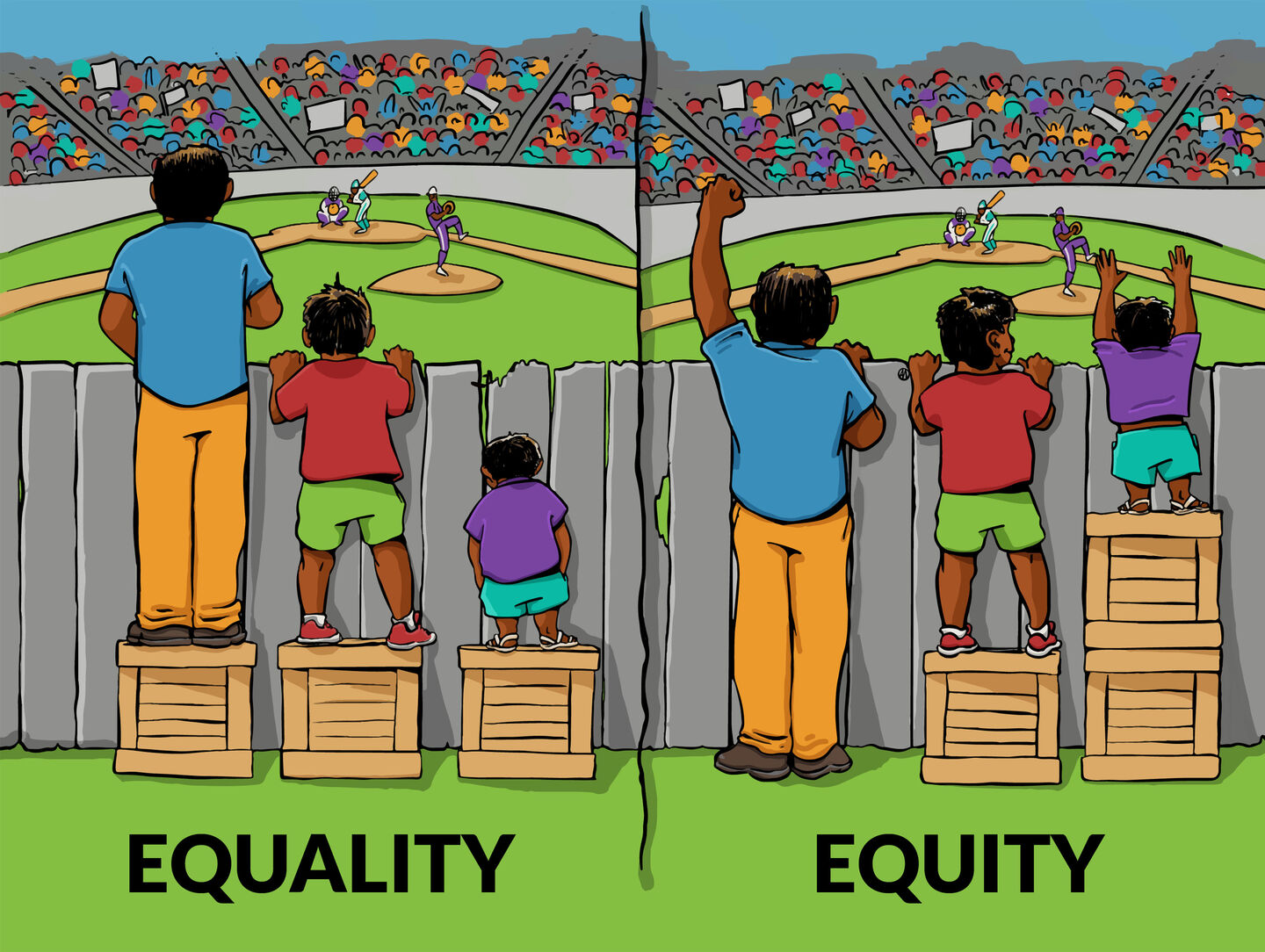Sara Oliver G.V.
Associate Creative Director

Oana Ciobotea: What is your understanding and experience of accessibility when working in voice projects
Sara Oliver: Something which I agree, and I’ve been hearing quite a few times, is that all of us, to some degree or at a certain point in our lives, become partly or fully disabled. Open Voice, during the workshop on accessibility, shared a fantastic image that explains this idea.
We can always break an arm or a leg, lose our sight temporarily, or even lose our voice at a friend’s gathering. Just consider how many people use glasses in the world. Therefore, when talking about accessibility, we must see beyond a special condition, especially in User Experience Design.
I’ve personally never seen Voice as the only mode to enhance accessibility. I am a strong advocate of multimodality.
From a user perspective, considering different contexts and channels to carry on an interaction makes things easier. For example, suppose you break your right arm, and you are a right-handed person. You now have a temporary disability. As a result, you will type a message on your smartphone very slowly. Still, you care to overcome that by controlling most of the functions of your phone via Voice, changing from voice to tap to your convenience.

When designing your user personas, it’s always good to have a broad list, including personas with different kinds of disabilities. This way, you make sure you don’t miss on a big group of people (one billion people, or 15% of the world’s population according to WorldBank.org).
This research period, primarily based on interviews, can be challenging but essential to set the ground for the project. We must understand people’s experiences and where they are coming from. For example, I am not blind, so I don’t know what kind of needs and issues a bling person encounters in their everyday life. I could imagine them, but it’s essential to go outside your worldview and be curious to learn how others perceive their day.
As a UX designer, but also as a person, you cannot make assumptions for anyone. It can be a challenge to accommodate everyone’s needs, but the world is a diverse place.
All of this it’s really an opportunity—an opportunity to expand and broaden up your own vision of the world through the lens of others. We can try to make technology as inclusive a possible, but there will always be things to innovate and improve. It’s better when we don’t get too comfortable as designers. We must always keep our critical thinking alert, getting out of our comfort zone every time we have the chance. By being critical, you will find the next improvement.
By bringing different modes together—visuals, touch, sounds, or ways to interact and receive information from technology, you are already planning for different touchpoints of accessibility. That is why I am a big advocate for multimodality.
Imagine you suddenly lose your voice; then you don’t have a problem because you can use your hands to touch the screens and interact with your devices. Most of our technology supports touch, but what if you break your arm? If your devices support voice, then you can use voice commands and meet your goals faster. Bringing voice into a project is already building for inclusivity. Moreover, our entire team is constantly informing themselves and sharing articles on how to design for better accessibility and inclusion.
I’ve been observing a constant evolution in the growth of positive values in the business and technology sectors. Nevertheless, it is hard to empathize with these topics if you don’t have a close case to relate to.
People sharing their experiences over the internet helps increase our awareness and consciousness over these topics, and it is crucial we stay open and ready to listen.
It is highly relevant to keep talking, advocating, and educating for fairness and equity in our designs. We must keep showing how virtual assistants and multimodality can facilitate accessibility and not give away our vision and values.
Moreover, when you design for a group of people with extreme life conditions or disabilities, you are helping everyone else in between. Planning for a broad spectrum of scenarios helps you cover a wide range of use cases. In the end, your business will reach more people.
Many great projects have been born in the last few years that are great and design for inclusivity. But I recently came across one that I really liked.
The University of the Basque Country (UPV/EHU) has a laboratory called Aholab that researches Text to Speech Conversion, Speech and Speaker Recognition, and Speech Processing in general. They’ve initiated a project called #DonaTuVoz (#DonateYourVoice). Each person can record their voice to create a “Synthetic Voices Bank” to help people with oral disabilities or who have lost their voice.
So basically, people that have lost their voice can find a new way to speak.
This project was initiated for people diagnosed with ALS (Amyotrophic Lateral Sclerosis). People in this condition gradually lose their Voice and body control, like the famous physicist Stephen Hawking. It’s beautiful to see a project that doesn’t require much effort but changes people’s lives. In the end, this is what it looks like to build for equity.
I hope, and work, for a future in which designing for accessibility doesn’t imply an extra effort. Planning in our design for all sorts of disabilities should be part of our day-to-day job. We must naturalize it.
